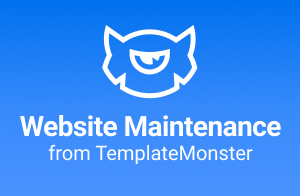
How To Fix 403 Forbidden Error In WordPress
Last modified: March 6, 2020
A 403 Forbidden status code is displayed when your server doesn’t give permission for a user to access a specific page. The error often shows with this text:
“403 Forbidden – You don’t have permission to access ‘/’ on this server.”
There are three different scenarios when this can happen. The first is on the WordPress login page or wp-admin. The second is during the WordPress install and finally, when a user is trying to access any other page.
The cause for such an error is often misconfigured security plugins. Many security plugins can cause this error as they block IP addresses (or a whole range), when they think they’re malicious. Another problem could be because of a faulty .htaccess file or incorrect permissions on your server. The latter of these can be caused by your host when they make changes to server settings.
Here is some help in fixing the error.
* This button will show the rest of the post and open up an offer from a vendor
Step One: Backup Your Site
Before you do anything, ensure there is a backup of your website. You can use a plugin or do a manual backup.
Step Two: Deactivate Plugins
If you don’t know where the problem is, then you need to disable all plugins. To do this you need to go to the plugins file in your WordPress files, using an FTP client and then change the name of the plugins file to plugins_disable. Then immediately rename the file to plugins again.
This will disable all the plugins. Check your website now. It should display, but it will not have many of the features.
If you notice your website is back on and displaying, it is a plugin causing a problem. You can switch them on, one at a time, to find out which one is causing the problem. You can do this in the dashboard.
Step Three: Look At The .htaccess File
If disabling plugins doesn’t fix the problem, then you need to look at the .htaccess file. Using an FTP client locate and access your .htaccess file, download it to your computer and delete the one on the server.
If you can now access your website, then the .htaccess file was corrupt.
You can regenerate a new copy of the file by now accessing your WordPress backend. Go to the Permalinks page in the settings menu within your WordPress dashboard. All you need to do then is to click on the ‘Save Changes’ button at the bottom of the page and a new .htaccess file will be generated.
Step Four: Reset File Permissions
If these two options haven’t worked, you need to reset file permissions. All folders and files have permissions in WordPress. This controls who can access them.
Connect to your WordPress website using an FTP client. Now find the root folder, this is the file that contains all your WordPress files. Right-click on that file and select ‘File Permissions’ from the menu.
You should see a permissions dialog box. Ensure that all folders have a permission of 744 or 755.
If you make changes, ensure that you check the boxes next to the options ‘Recurse into subdirectories’ and ‘apply to directories only’.
Click on the ‘Save/OK‘ button.
Then you need to repeat this process for the files, ensuring that all permissions are 644 or 640.
Fix Your 403 Forbidden Error In WordPress Without A Developer
Using the above solution, you can fix a 403 Forbidden Error in WordPress without the need of a professional website developer. Give it a try and get your WordPress website working again.

 Website Maintenance – Use Promocode: scanwp
Website Maintenance – Use Promocode: scanwp  Advanced JetPlugins for Elementor
Advanced JetPlugins for Elementor  Semrush 14 days trial
Semrush 14 days trial  Kinsta – Managed WordPress Hosting
Kinsta – Managed WordPress Hosting  Bluehost Hosting
Bluehost Hosting